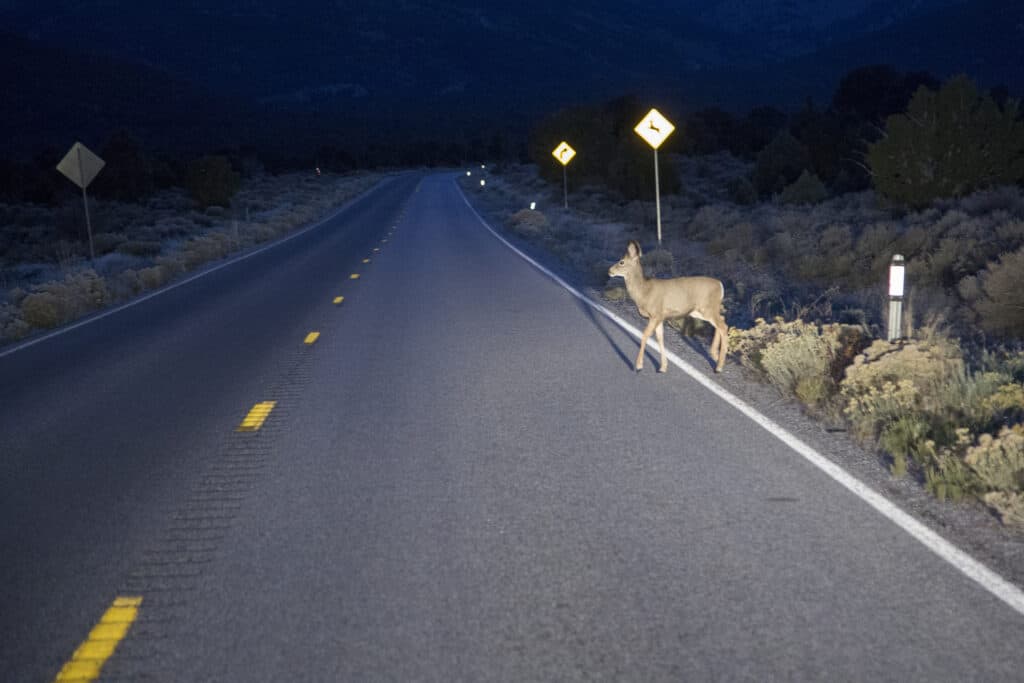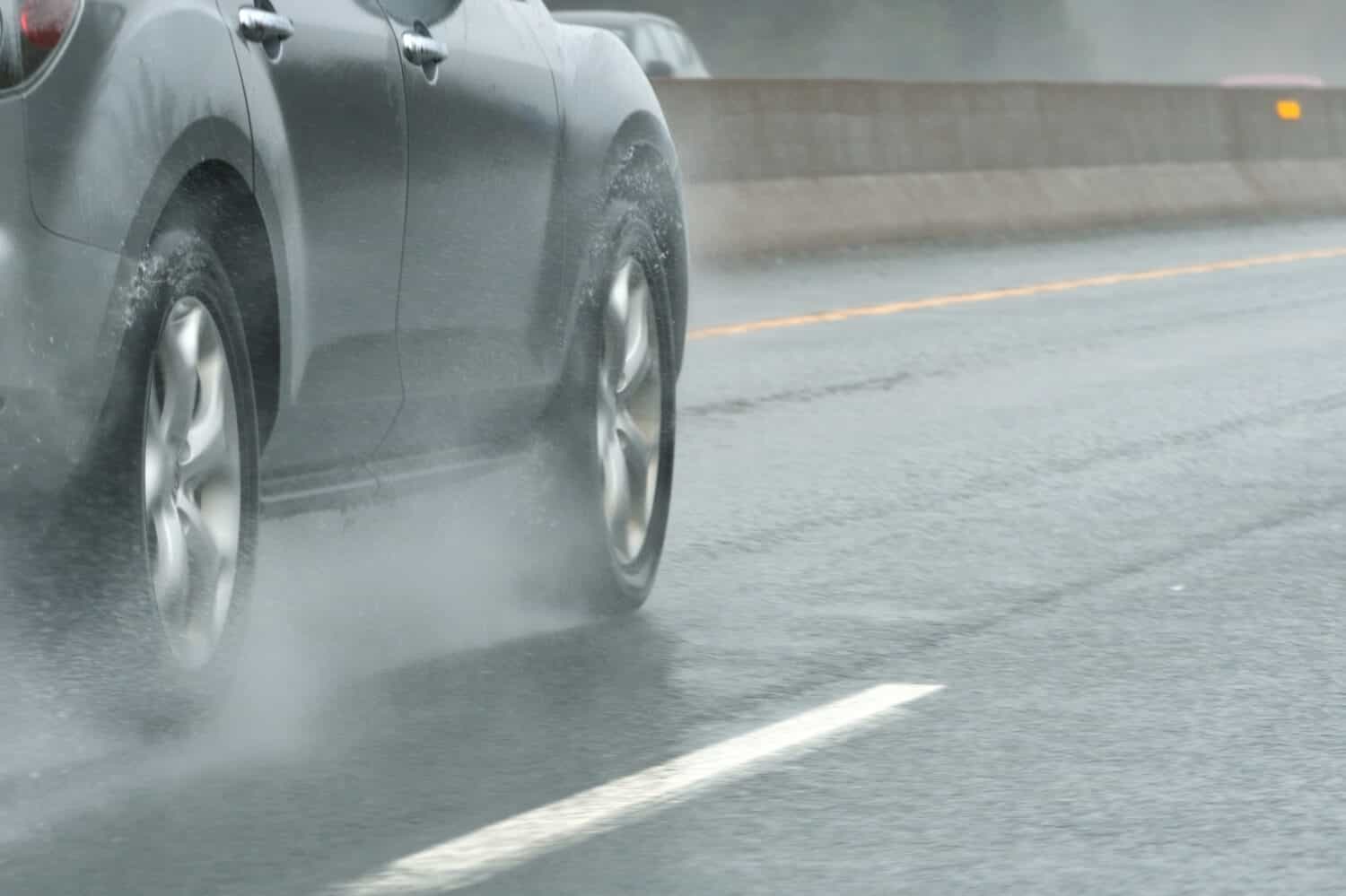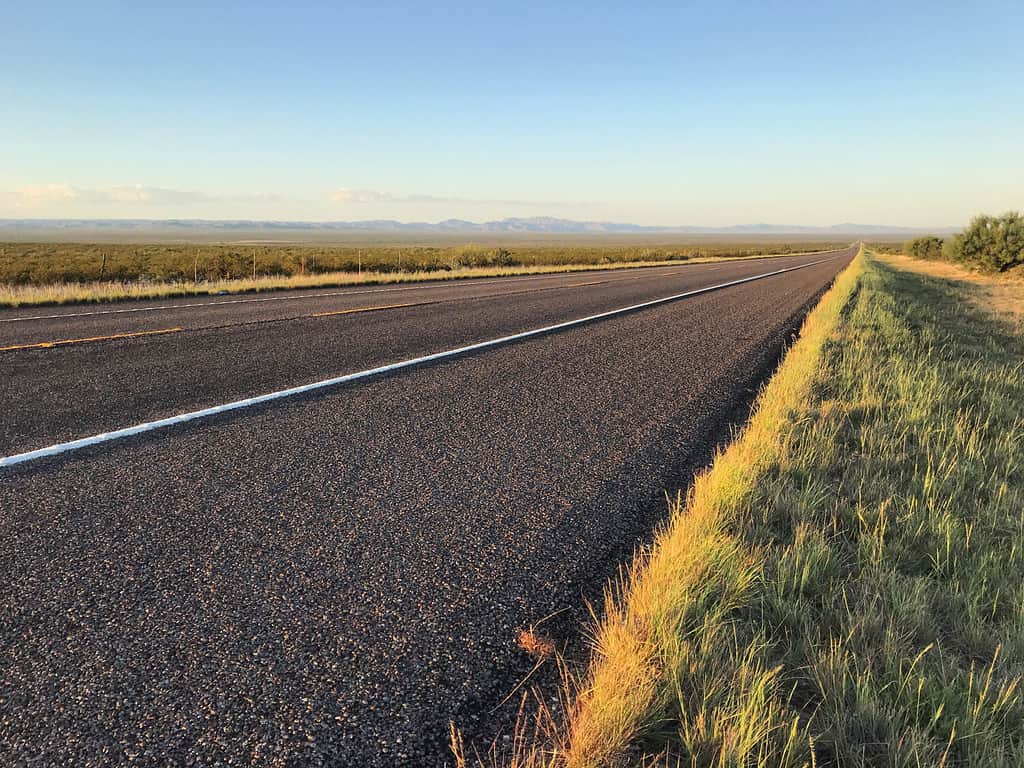Let’s hit the road and explore Arizona but be careful: some of the interstates you’ll travel on are notorious for high accident rates. Arizona has more than its fair share of dangerous routes, from winding mountain roads to desolate stretches of highway. Here we’ll examine some of Arizona’s most dangerous roads in detail, pointing out the hazards and discussing how best to avoid them. Fasten your seatbelts for a terrifying tour of the Grand Canyon State’s riskiest highways!

Arizona has more than its fair share of dangerous routes.
©Nate Loper/Shutterstock.com
According to a number of studies and polls, the following are some of the most hazardous highways in the state of Arizona:
1. 43rd Avenue (from W. Lamar Rd to W. 3)
It’s not always easy to relax when driving down 43rd Avenue, which connects W. Lamar Rd and W. 3 in Phoenix, Arizona. The road is notorious for its many cracks and potholes, both of which can seriously impair your vehicle’s handling. You should keep an eye out for these and drive at a reasonable speed to prevent damaging your vehicle or getting into an accident with other motorists.
You should also exercise extreme caution while merging onto or departing this route during rush hour when traffic volumes are at their highest. Be patient, take your time, and always express your intentions clearly, since you may encounter drivers that are in a rush or distracted by their phones.
Additionally, there are a lot of pedestrians and bicyclists on this road, so please be considerate of them and allow them plenty of space. Keep in mind that you should never travel too closely to a pedestrian or cyclist.
2. Indian School Road (from N. 53rd Avenue)
Traveling south on Indian School Road from Arizona’s N. 53rd Avenue can be an exciting experience. The high volume of traffic on this route during rush hour is the first thing you’ll notice. Other motorists on the road may be in a hurry or otherwise not paying attention, so take caution.
Indian School Road is notorious for its sharp twists and tight curves, making it difficult to navigate for anyone who is unfamiliar with the area. Pay attention to speed limits and traffic signs.
The presence of pedestrians and bikers on Indian School Road is another potential hazard. Since pedestrians and bicyclists often use this road, you should exercise caution and give them plenty of space.
You should also use caution when turning or merging onto Indian School Road because of the heavy traffic it experiences at its junctions. To avoid a collision with other vehicles, always use your signal lights and check your blind zones.
3. I-17 (from Phoenix to Flagstaff)

The presence of wildlife, such as deer and elk, means these animals may wander into the road.
©iStock.com/frontpoint
Interstate 17 in Arizona, which connects Phoenix and Flagstaff, is not always a smooth journey. There are a lot of sharp uphill and downhill curves on this route, making it difficult for motorists who aren’t used to it. Be cautious about your speed and the state of the road and check the condition of your brakes and tires before setting off.
The weather is another factor to keep in mind while traveling on I-17. Heavy rain or snowfall, both of which are common in this area, might cause the road to become slick and obscure your view. Check the forecast and adjust your plans appropriately.
The presence of wildlife, such as deer and elk, means these animals may wander into the road. When traveling through rural regions, be extremely vigilant and ready to use your brakes quickly if you see an animal on the road.
Finally, during rush hours, I-17 may get extremely crowded, necessitating extreme caution and patience when entering or departing the highway. Don’t speed or multitask while behind the wheel, and always allow extra time for travel.
4. US Route 93

Torrential rainstorms are common along US Route 93 and hydroplaning is a risk.
©Greenseas/Shutterstock.com
Driving along US Route 93 in Arizona may be an exciting adventure, but drivers should be mindful of the risks they face. The numerous curves of the route provide one of the greatest threats. This road is notorious for its twisting stretches, which can throw off motorists. Watch the road ahead carefully and slow down as you approach curves to avoid any mishaps.
The presence of huge commercial vehicles on US Route 93 is an additional safety concern. This road is a key freight route between Phoenix and Las Vegas, so expect a lot of large rigs. To avoid a collision, be sure to give them plenty of room and stay out of their blind spots.
Besides these threats, rush-hour traffic on US Route 93 may be unbearable. You’ll need to be patient and flexible enough to make last-minute decisions or lane changes.
Finally, be aware of the weather when traveling on US Route 93, as unexpected and torrential rainstorms are common in this region. Hydroplaning is likely when the road becomes slippery. Take it easy and watch the road closely when driving in bad weather.
5. Interstate 19
There are a number of potential dangers for motorists on Interstate 19. Extreme winds are a threat year-round, and these winds might make it hard to steer your car and could even lead you to swerve into oncoming traffic. When traveling through high winds, it’s important to drive slowly and keep both hands on the wheel.
The presence of heavy vehicles, such as semi-trucks and buses, presents an additional hazard. It might be dangerous to pass these large trucks because of the obstruction they create. Wait your turn and don’t take any chances.
In addition, drivers unfamiliar with I-19 may find the road’s numerous fast twists and high inclines difficult to navigate. To avoid losing control, it’s crucial to approach these stretches of road at a steady and safe speed.
Animals are another possible threat on I-19. There are a lot of rural areas along this road, so be on the lookout for wildlife like deer and coyotes. Be especially watchful at night to avoid hitting unsuspecting animals.
Finally, when driving on I-19, keep an eye on the forecast. Arizona’s unpredictable monsoons can cause flash flooding and reduced visibility. Stay off the roads during storms and, if you must travel, take additional precautions in rainy or flooded regions.
6. Interstate 40

Extreme heat may damage tires and engines and lead to heat exhaustion.
©G B Hart/Shutterstock.com
The harsh desert environment, particularly its high temperatures, poses a significant threat to Interstate 40 in Arizona. Extreme heat may damage tires and engines and lead to heat exhaustion and heat stroke in the summertime. Before starting off on a trip, make sure your automobile is in good working order and you have plenty of water.
The presence of huge commercial trucks and other enormous vehicles on I-40 is another key concern to consider. Trying to pass one of these vehicles presents an especially high risk. To remain out of harm’s way, be patient, watchful, and careful not to loiter in blind spots.
I-40 also features some hairpin curves and blind corners due to its twisting terrain and high slopes. Avoid potential collisions by driving slowly through these sections.
Keep an eye out for animals crossing I-40, another potential threat for motorists. Since the route passes through a number of rural regions, motorists should be aware that deer may unexpectedly cross the road. Always be on the watch!
Finally, bad weather may be a major hazard. Sudden and powerful thunderstorms are common in the region, and they often result in flash floods and reduced visibility. Avoid accidents by driving slowly and cautiously during storms.
In Conclusion
The most hazardous roads in Arizona require extreme caution and vigilance when driving. There are always potential dangers to think about, whether you’re driving on a highway, across the mountains, or through a rural region. Whether it’s heavy winds and freezing weather or challenging terrains and tight curves, it’s best to be ready for everything.
When driving in Arizona, be aware of your surroundings, take defensive driving measures, and be cautious. Before embarking on a trip, do some route planning and risk assessment. With the appropriate attitude and preparedness, even the most hazardous roads in Arizona may be driven on safely and enjoyably.
Keep in mind that this is not an exhaustive list and that many variables affect road safety. Safe driving practices should be used on all roads at all times.
Summary of The 6 Most Dangerous Roads in Arizona
| Rank | Dangerous Road | Location |
|---|---|---|
| 1 | 43rd Avenue (from W. Lamar Rd to W. 3) | Phoenix |
| 2 | Indian School Road (from N. 53rd Avenue) | Phoenix |
| 3 | I-17 | Phoenix to Flagstaff |
| 4 | US Route 93 | Phoenix to Las Vegas |
| 5 | Interstate 19 | Nogales to Tuscon |
| 6 | Interstate 40 | Northern part of the state |
Thank you for reading! Have some feedback for us? Contact the AZ Animals editorial team.








